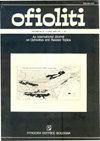伊朗东霍伊蛇绿杂岩中铬铁矿及其伴生铂族矿物(pgm)的岩浆和岩浆后意义
IF 1.3
4区 地球科学
Q2 GEOLOGY
引用次数: 9
摘要
Khoy蛇绿岩是伊朗最大的蛇绿岩杂岩之一,其地质特征非常复杂,由不同年龄和不同地球动力学背景的蛇绿岩组成。在Khoy蛇绿岩中发现了少量小透镜状和不规则的足状和纹影型铬铁矿体,它们出现在蛇纹岩化的地幔橄榄岩中。它们有块状和结节状纹理。根据其铬铁矿组成,可将科伊铬铁矿划分为富铝铬铁矿,属于足状铬铁矿范畴。Khoy蛇绿岩脚状铬铁矿的岩浆铬铁矿组成表明,它们是在伸展条件下由MORB型熔体结晶而成的。Khoy铬铁矿在海底变质作用中被蚀变,没有岩浆硅酸盐保存下来。出现在硅酸盐基质中或与铬铁矿接触的绿泥石组成已被用作地温计。估计的温度可能反映了低变质作用的影响。Khoy铬铁矿的总铂族元素(PGE)浓度很低,Os + Ir + Ru高于Rh + Pt + Pd。与地球化学数据一致,它们含有少量的Ru、Ir和Os铂族矿物。褐铁矿是最常见的PGM,还有少量的Ir-Cu硫化物,可能还有铜绿矿、锇和铁长石。大部分PGM为岩浆成因。它们在一个狭窄的温度范围内结晶,大约1000摄氏度,硫逸度相对较低,没有流体。这一观测结果与铬铁矿形成于洋中脊(MOR)而非超俯冲带(SSZ)一致。本文章由计算机程序翻译,如有差异,请以英文原文为准。
MAGMATIC AND POST-MAGMATIC SIGNIFICANCE OF CHROMITITE AND ASSOCIATED PLATINUM-GROUP MINERALS (PGM) IN THE EASTERN KHOY OPHIOLITIC COMPLEX (NW IRAN)
The Khoy ophiolites are one of the largest Iranian ophiolitic complexes and are characterized by a very complicate geology, consisting of several ophiolites with different ages and geodynamic settings of formation. Few small lenticular and irregular bodies of podiform and schlieren type chromitites have been recognized in the Khoy ophiolites, occurring in the serpentinized mantle peridotites. They have massive and nodular textures. According to their chromite composition, the Khoy chromitites can be classified as Al-rich and fall clearly in the field of podiform chromitites. The magmatic chromite composition of the podiform chromitites of the Khoy ophiolites suggests that they crystallized from a MORB type melt in an extensional regime. The Khoy chromitites were altered during ocean floor metamorphisms and no magmatic silicates were preserved. The composition of chlorite occurring in the silicate matrix or in contact with chromite has been used as a geothermometer. The estimated temperatures possibly reflect the effects of low-grade metamorphism. The Khoy chromitites have very low total platinum group elements (PGE) concentration with a predominance of Os + Ir + Ru over Rh + Pt + Pd. Consistently with the geochemical data, they contain few platinum group minerals (PGM) of Ru, Ir and Os. Laurite is the most common PGM along with a minor Ir-Cu sulfide, possibly cuproiridsite, osmium and erlichmanite. Most of the PGM are magmatic in origin. They crystallized in a narrow range of temperature, around 1000 o C, at relatively low sulfur fugacity and in the absence of fluids. This observation is consistent with formation of the chromitites in a mid-oceanic ridge (MOR) rather than in a supra-subduction zone (SSZ).
求助全文
通过发布文献求助,成功后即可免费获取论文全文。
去求助
来源期刊

Ofioliti
地学-地质学
CiteScore
2.40
自引率
7.70%
发文量
1
期刊介绍:
Since 1976, Ofioliti provides an international forum for original contributions and reviews in the field of the geodynamics, petrology, geochemistry, biostratigraphy, stratigraphy, tectonics and paleogeography applied to ophiolitic terrains and modern oceanic lithosphere, including their sedimentary cover. Studies of topics such as geodynamics of the mantle, the evolution of orogens including ophiolites and paleoceanography are also welcome
 求助内容:
求助内容: 应助结果提醒方式:
应助结果提醒方式:


